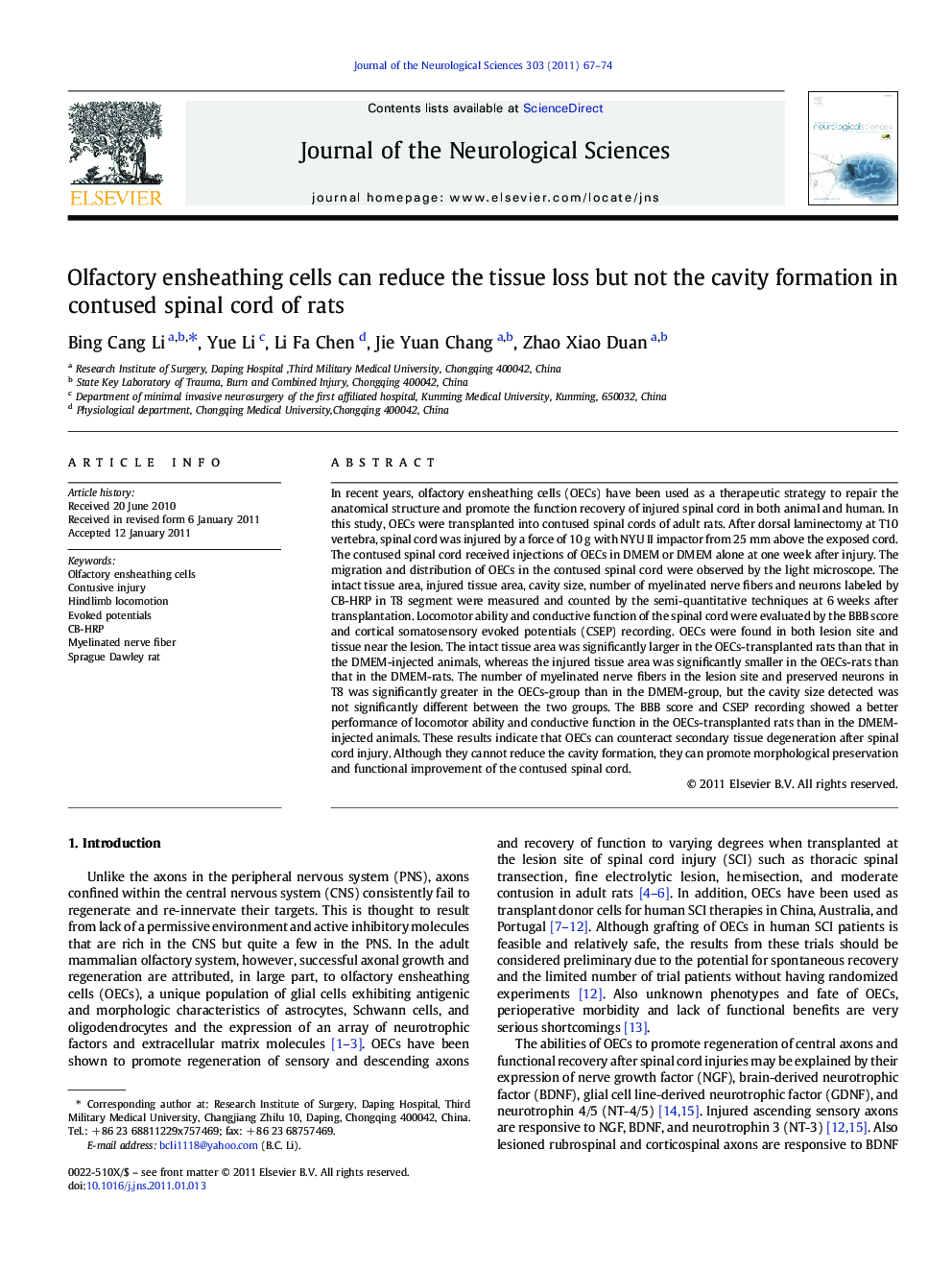| کد مقاله | کد نشریه | سال انتشار | مقاله انگلیسی | نسخه تمام متن |
|---|---|---|---|---|
| 8282648 | 1645457 | 2011 | 8 صفحه PDF | دانلود رایگان |
عنوان انگلیسی مقاله ISI
Olfactory ensheathing cells can reduce the tissue loss but not the cavity formation in contused spinal cord of rats
دانلود مقاله + سفارش ترجمه
دانلود مقاله ISI انگلیسی
رایگان برای ایرانیان
کلمات کلیدی
موضوعات مرتبط
علوم زیستی و بیوفناوری
بیوشیمی، ژنتیک و زیست شناسی مولکولی
سالمندی
پیش نمایش صفحه اول مقاله

چکیده انگلیسی
In recent years, olfactory ensheathing cells (OECs) have been used as a therapeutic strategy to repair the anatomical structure and promote the function recovery of injured spinal cord in both animal and human. In this study, OECs were transplanted into contused spinal cords of adult rats. After dorsal laminectomy at T10 vertebra, spinal cord was injured by a force of 10Â g with NYU II impactor from 25Â mm above the exposed cord. The contused spinal cord received injections of OECs in DMEM or DMEM alone at one week after injury. The migration and distribution of OECs in the contused spinal cord were observed by the light microscope. The intact tissue area, injured tissue area, cavity size, number of myelinated nerve fibers and neurons labeled by CB-HRP in T8 segment were measured and counted by the semi-quantitative techniques at 6Â weeks after transplantation. Locomotor ability and conductive function of the spinal cord were evaluated by the BBB score and cortical somatosensory evoked potentials (CSEP) recording. OECs were found in both lesion site and tissue near the lesion. The intact tissue area was significantly larger in the OECs-transplanted rats than that in the DMEM-injected animals, whereas the injured tissue area was significantly smaller in the OECs-rats than that in the DMEM-rats. The number of myelinated nerve fibers in the lesion site and preserved neurons in T8 was significantly greater in the OECs-group than in the DMEM-group, but the cavity size detected was not significantly different between the two groups. The BBB score and CSEP recording showed a better performance of locomotor ability and conductive function in the OECs-transplanted rats than in the DMEM-injected animals. These results indicate that OECs can counteract secondary tissue degeneration after spinal cord injury. Although they cannot reduce the cavity formation, they can promote morphological preservation and functional improvement of the contused spinal cord.
ناشر
Database: Elsevier - ScienceDirect (ساینس دایرکت)
Journal: Journal of the Neurological Sciences - Volume 303, Issues 1â2, 15 April 2011, Pages 67-74
Journal: Journal of the Neurological Sciences - Volume 303, Issues 1â2, 15 April 2011, Pages 67-74
نویسندگان
Bing Cang Li, Yue Li, Li Fa Chen, Jie Yuan Chang, Zhao Xiao Duan,